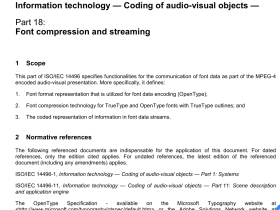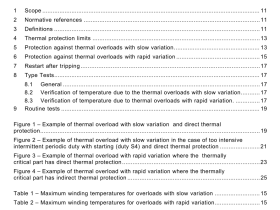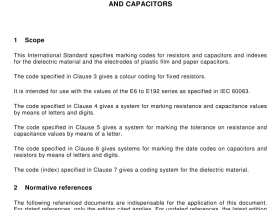IEC 60724 pdf download

IEC 60724 pdf download Short-circuit temperature limits of electric cables with rated voltages of 1 kV (U m = 1,2 kV) and 3 kV (U m = 3,6 kV)
The 5 s time period mentioned is the limit for the temperatures quoted to be valid and not for the application of the adiabatic calculation method. The time limit for the use of the adiabatic method has a different definition, being a function of both the short-circuit duration and the cross-sectional area of the current-carrying component. This is dealt with in IEC 60949.
Caution may be needed when using the conductor temperatures specified when the cables are sheathed with a lower temperature material, especially for cables with conductor cross- sectional areas of 1 000 mm 2 and above. This is because the high thermal time constant of these cables will cause the oversheath to attain high temperatures for longer times. In addition, the high mechanical forces could result in insulation deformation. Nevertheless, it should be stressed that for conductor cross-sectional areas above 1 000 mm 2 the permissible short- circuit current is so high that it is not normally attained in common systems.
Where other temperature limits are known with certainty to be more appropriate for the materials or the cable design, then these may be used.
3.2 Cables
3.2.1 Paper insulated cables (mass-impregnated cables according to IEC 60055)
The temperature limits for paper insulated cables impregnated with oil/resin or non-draining compound are imposed by the tendency to compound migration and void formations. All paper insulated cables are also limited by thermal degradation of the cable components and by possible tearing of paper tapes due to movement of the cores.
3.2.2 Polymeric insulated cables (according to IEC 60502-1) For thermoplastic insulating materials, the temperature limits should be applied with caution when the cables are either directly buried or securely clamped when in air. Local pressure due to clamping or the use of an installation radius less than that specified for the cable, especially for cables that are rigidly restrained, can lead to high deforming forces under short-circuit conditions. Where these conditions cannot be avoided it is suggested that the limit be reduced by 1 0 °C.
3.3 Accessories Attention should be given to the design and installation of joints and terminations if the short- circuit limits set out in this standard are to be safely used. The following aspects are not exclusive and are provided for guidance only. It is desirable that the performance of an accessory be considered in the context of the particular installation.









